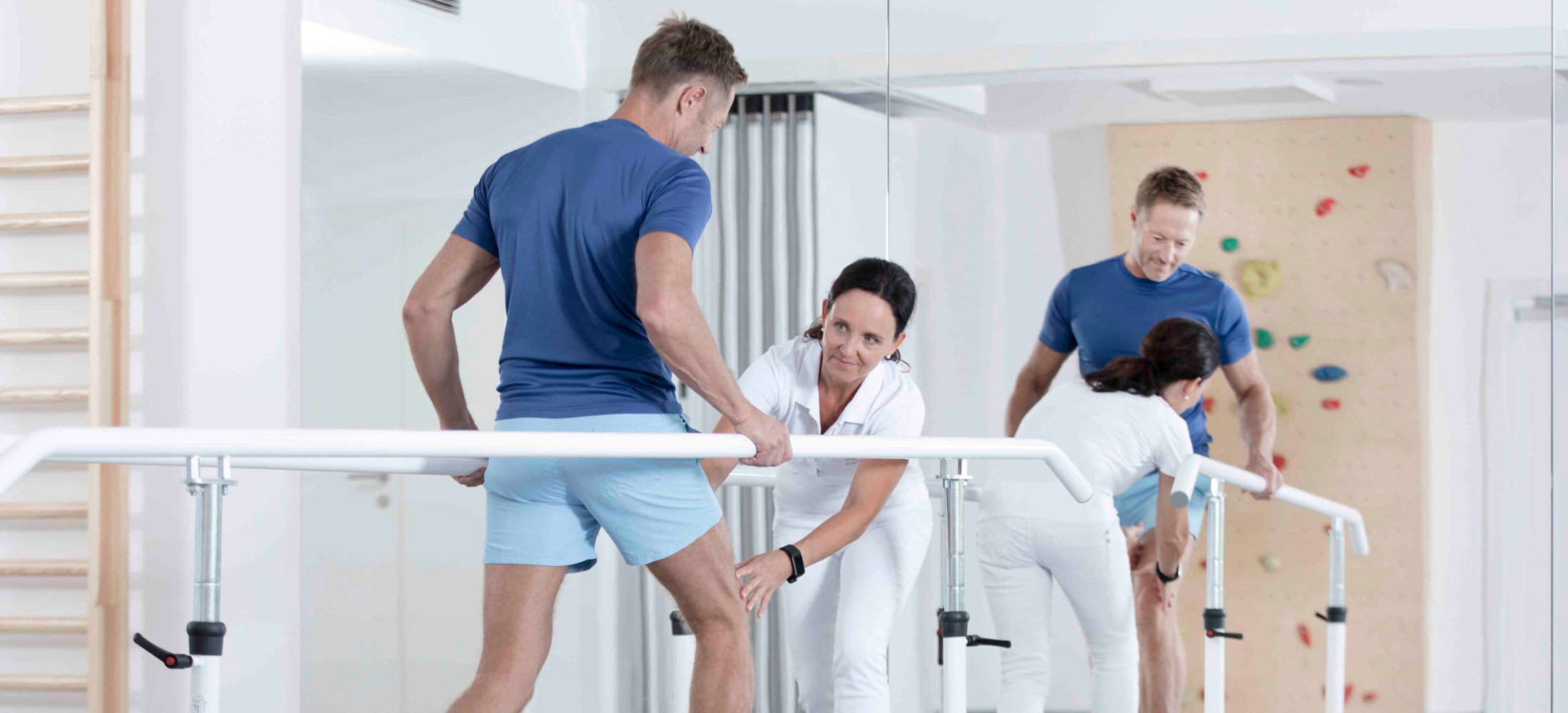
During your 14-day stay (Sun-Sun), you will enjoy the peace and security of the upscale ambience of our facility while being optimally cared for by your personal rehabilitation team.
It is not only the performance of work and sports that are often a challenge after operations, accidents and serious illnesses. Those affected also frequently experience restrictions in their everyday lives. But this does not have to be the case. Those who take the necessary time for rehabilitation will reliably find their way back to a better body feeling and the greatest possible health. We at NUHR Medical Center are happy to accompany you in your rehabilitation with our NUHR Physical therapy offer.
Every person has his or her own health story. We take sufficient time for this so that we can then create an individual treatment concept for you. Our specialists in pain medicine and rehabilitation, exercise therapy, physical therapy and complementary medicine are also available to assist you throughout your time at NUHR Medical Center. This ensures that we are fully informed about your current progress at all times and that the path to your health goal is always the most direct one.
The purpose of rehabilitation is the rapid restoration of physical performance after surgical interventions (e.g. artificial joint replacement) as well as after accidents and illnesses of a neurological, internal or geriatric nature. Would you like to be able to master your everyday life without restrictions? Then take time for your health now!
Your individual therapy plan consists of 7 to 9 therapies per day and is made up of the following therapies :
The price includes overnight stays in a standard room, full board, medical examinations and 10 therapy days. Contractual partners are the Austrian health insurance companies BVAEB, SVS-LW and SVS-GW, which partly cover the costs of the therapies, all other health insurance companies will reimburse the costs upon request. After the medical examination you will receive your individual offer.
from € 4.900,-
Therapeutic aftercare is just as important as surgery!
In physical therapy, a wide variety of exercises are learned with the support of the therapists for the slow reconstruction of the musculature.
The shoulder joint is one of the most complex joints in the human body. Through a wrong movement, it can quickly come to a shoulder injury.
To get back to the mobility of the shoulder girdle, physical therapy is often important.
Paralysis is the inability to operate single or multiple muscles, muscle groups or limbs voluntarily. In central paralysis, the focus of the disease is in the long nerve tracts or in the brain itself. Central paralysis is always spastic, i.e., the state of tension of the affected muscles is increased.
In peripheral paralysis, the nerve is either damaged or diseased in its course after exiting the spinal cord, or where it originates in the anterior horn of the spinal cord. In this case, the paralysis is always flaccid and there is no evidence of tension.